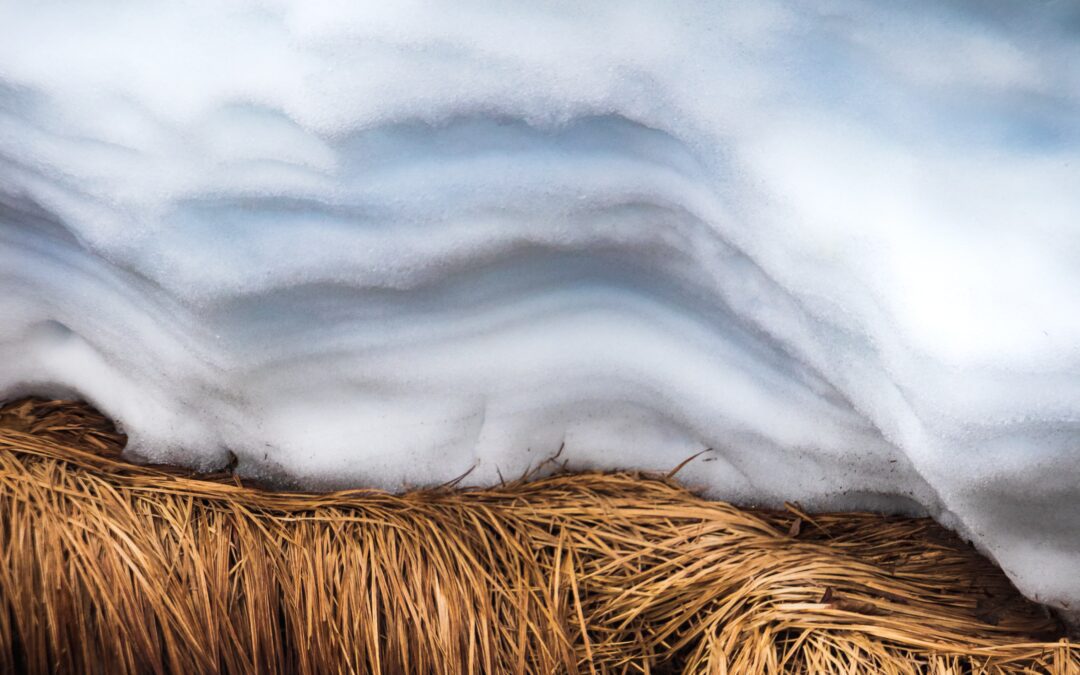Although the winter temperatures this year here in Northeastern Wisconsin are sometimes feeling more like our early Spring temperatures, the normal freezing temperatures of winter are still on their way. And, while the frigid temperatures and lack of sufficient sunlight can put quite a damper on our human spirits throughout the long winter months, they can be quite the buzz kill for our grasses too!
Here in the Fox Valley region of Wisconsin, the most common type of grass we use when growing grass for our lawns is a turfgrass called Kentucky Blue Grass. We especially use this type because it not only withstands the cooler temperatures, but it actually thrives in terms of growth and lushness when in cooler temperatures. Thus, it is relatively easy for our lawns to prepare themselves for winters properly when they are well-taken care of. This means the gras will go dormant throughout the winter and return to a healthy, green state in the Spring (and even healthier and greener if provided with the appropriate numbers of different elements – similar to the ways we use vitamins for our bodies). Kentucky Blue Grass is very resilient when it comes to the winters we are used to experiencing here in Northeastern Wisconsin. But… there can still be some cases where the grass does not bounce back as it should once winter is over when other foliage is starting to sprout. When this happens, it is known as ‘winter kill’, and there can be many different causes of this effect.
One cause of winter kill is known as Winter Desiccation, which is basically a drought that can be caused to the ground if the conditions are just right for it during parts of Winter, which may sound like an oxymoron. This type of winter kill can occur if there is not enough snow on the ground. The presence of snow actually helps our grass to survive. How so? It acts as an insulator, providing our lawns with a blanket that helps moisture and oxygen stay trapped underneath it so that the grasses and roots stay well-hydrated while dormant. When the ratio of water being lost by grass exceeds the ratio of water picked up by the roots over a consistent period of time, winter desiccation tends to occur, causing the ground itself to be very dried out. The longer the consistency of this imbalanced ratio to occur while frigid temperatures occur, the greater the chances of increased damage being done to the grass.

What’s more disturbing about water desiccation in the winter is that there is not much that can be done to prevent it from happening, as watering your lawn with a hose or sprinkler can be quite difficult to do in freezing temperatures. Furthermore, it is recommended to only water your lawn when temperatures are above freezing and when the soil is not yet frozen. The way that water lands on the ground during snowfalls is very different than water in rainfalls, which makes a big difference. Water falling as snow creates an environment where the frozen ground does not get drenched with frozen water all at once, which could easily cause grass and other plants to be irrecoverable if it were not this way.
Fortunately, as stated above, Kentucky Blue Grass is a more resilient type of grass in colder temperatures, which means there is a high probability for recovery after experiencing this type of winter kill. Once Spring arrives and you notice dead areas of grass throughout your lawn that don’t appear to be growing or turning green again, the first step is to give us a call so we can send an expert out to investigate and provide an educated diagnosis. If your lawn receives a diagnosis involving Winter Desiccation, then Spring Aeration followed by overseeding might just be a few of the best and most common prescriptions for a healthy and successful recovery of your lawn.
Read about the Other Leading Cause of Winter Kill Here! –> https://stormthelawnpro.com/winter-kill-common-cause-snow-mold/




